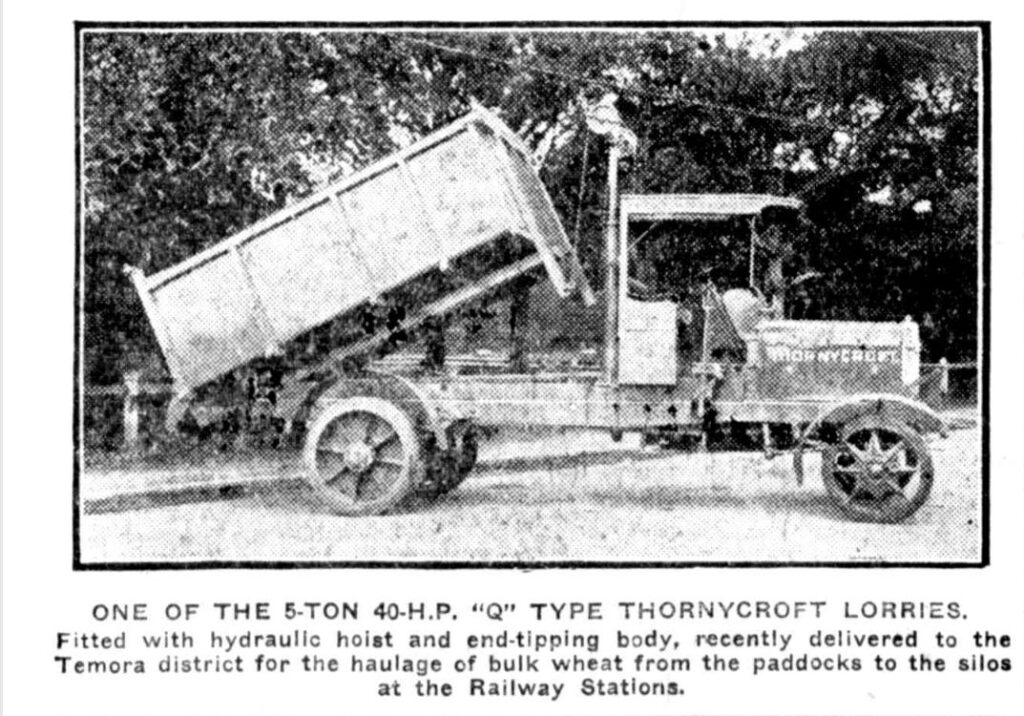Wheat Handling
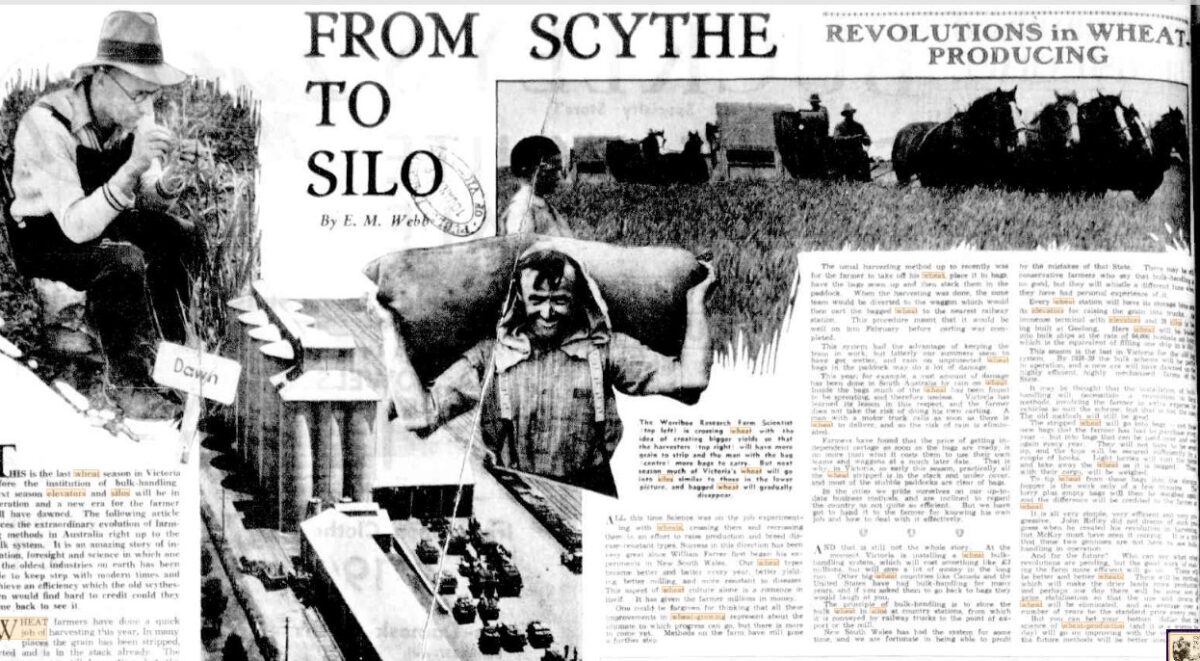
From Waler Data Base @ FaceBook. Image: Herald, Melbourne, 8th January 1938

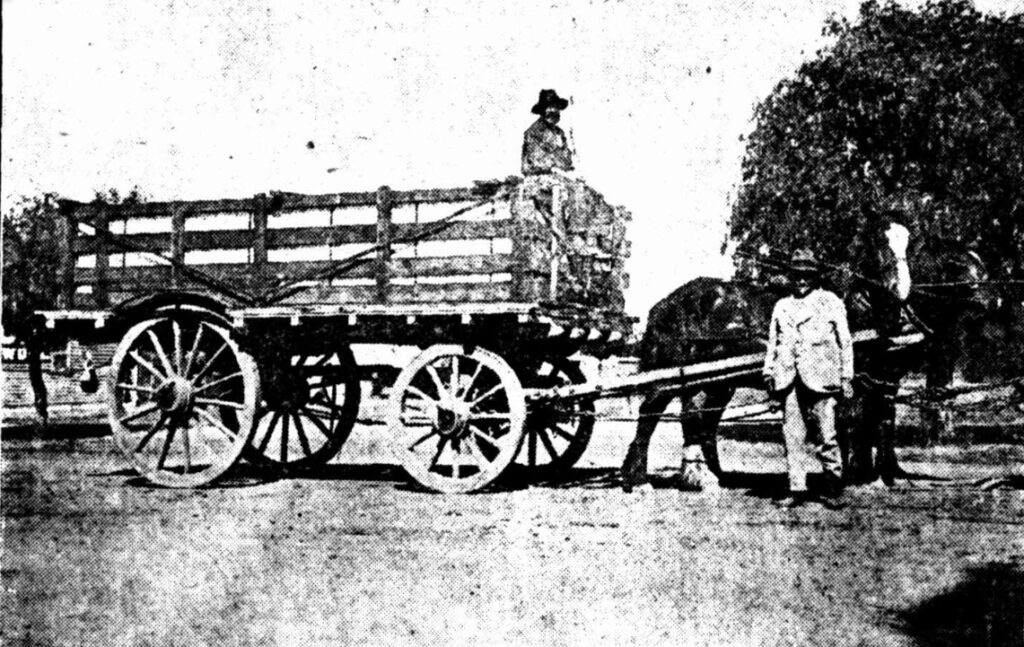
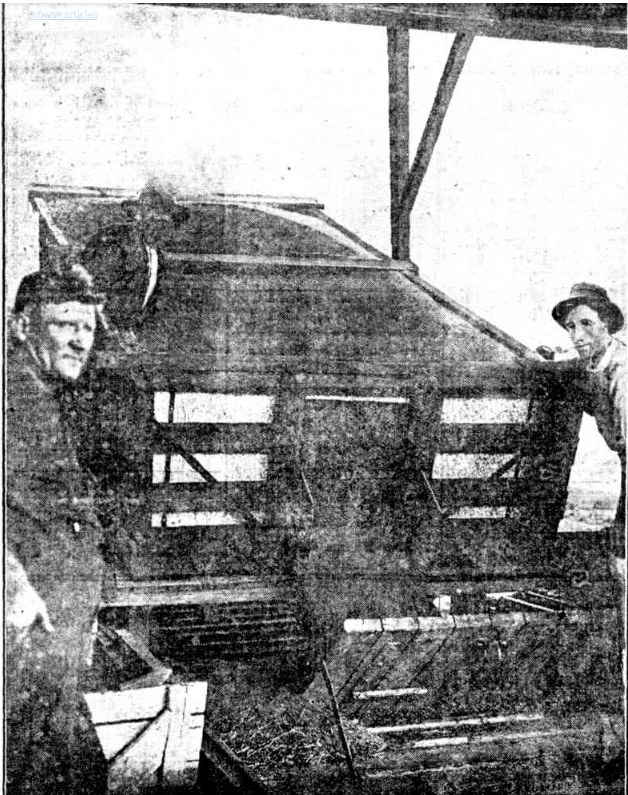
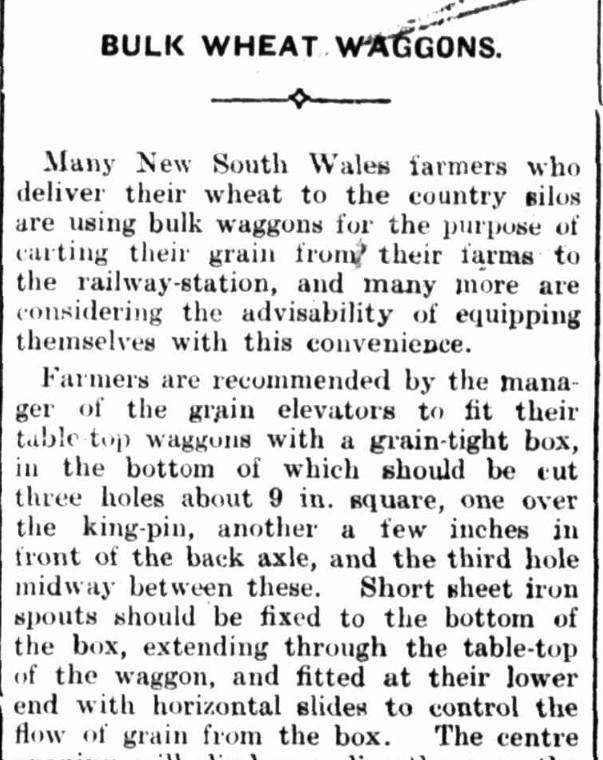
Newspaper Images: West Coast Sentinel (Streaky Bay S.A.), 2nd January 1926
Wheat – bulk handling of wheat, loose, not bagged, for silos was introduced in the early 1920’s. Horse drawn wagons took the loose wheat direct to silos, some took it to trains, as silos were put in at train stations so they didn’t have to wait for the train.
Open wagons had iron added to the sides to hold the wheat.
Photo: Unloading bulk wheat from RU wagon at White Bay. Undated. National Archives of Australia.
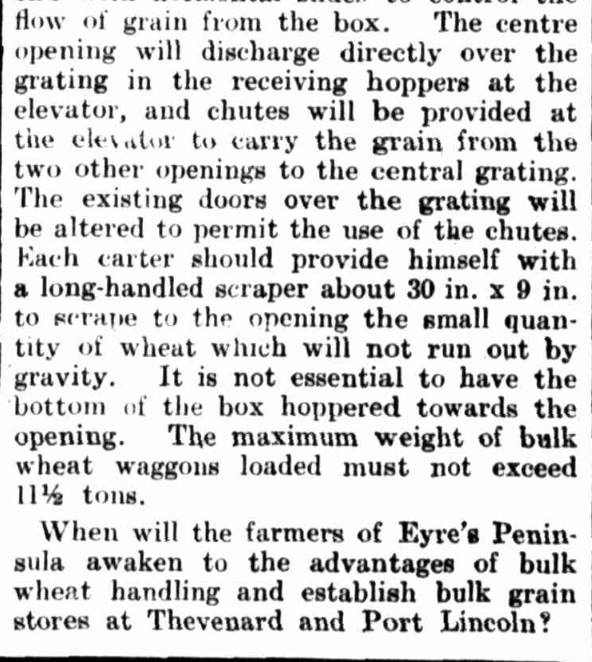
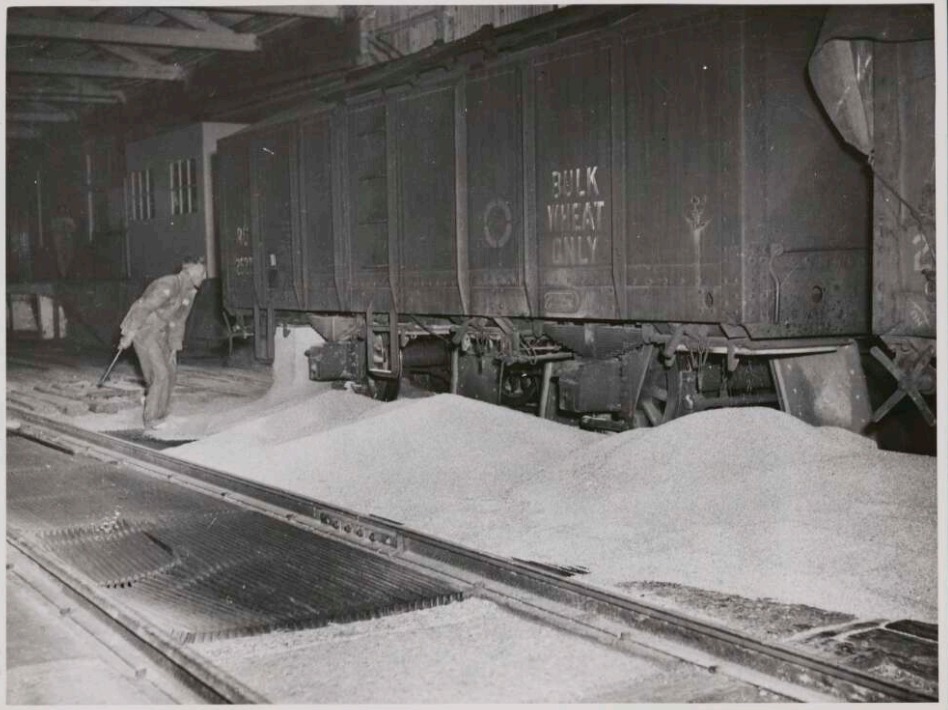
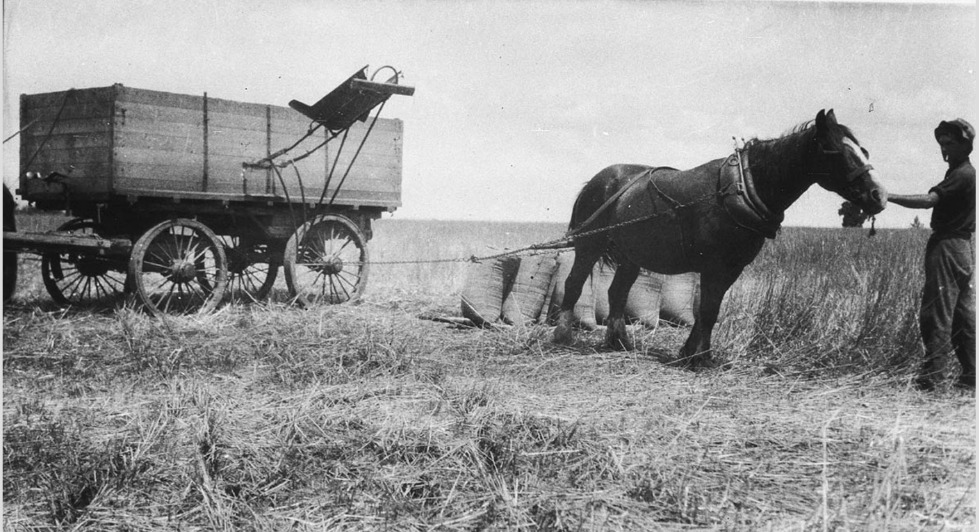
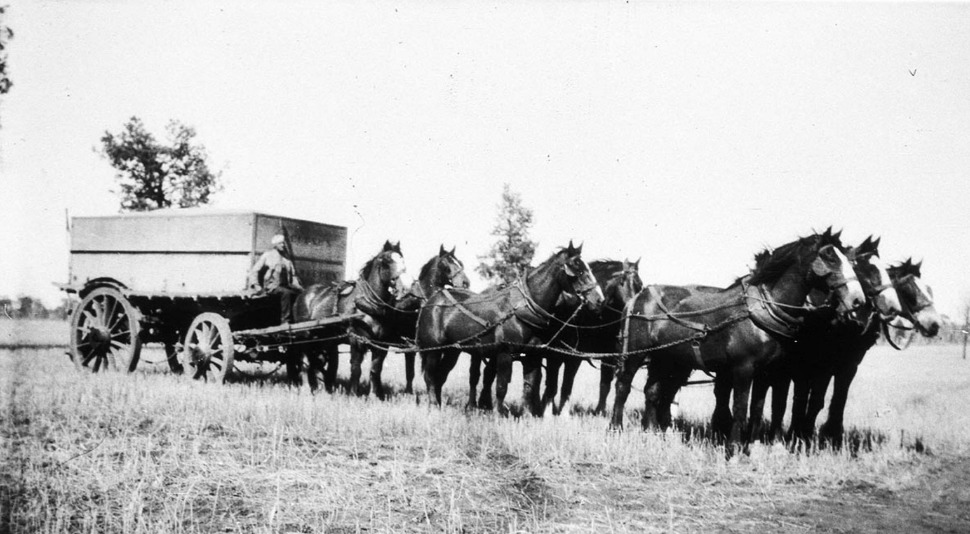
Images from Ariah Park, NSW. c. 1924. State Library NSW: Loading bulk wheat wagon on ‘Clifton’. The open bags were tipped into the wagon by the horse pulling against the loading arm. The wagons were no good if they bogged because they couldn’t be unloaded easily; Bulk wheat wagon on ‘Clifton’ property of G G Ballantyne. Roy Rogers horse team.
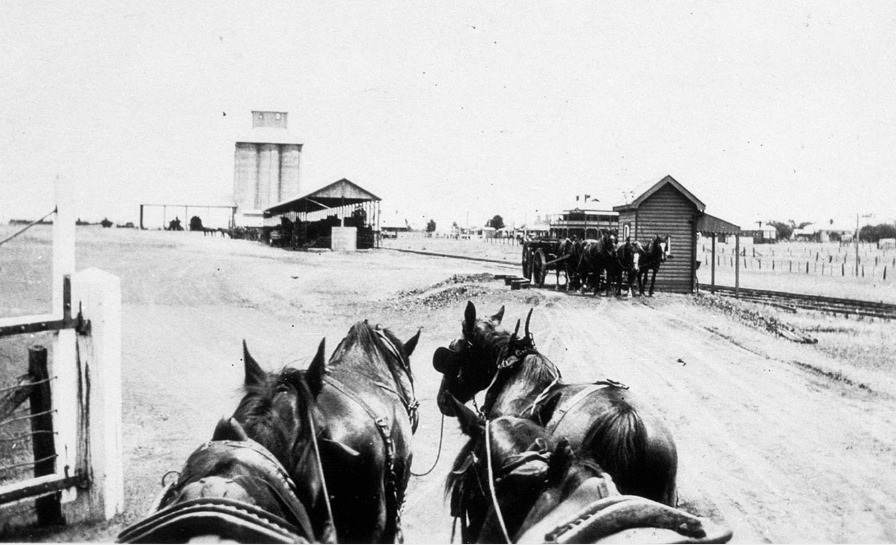
Thanks to Matt Crosbie for letting us know Ariah Park was the first to start doing bulk handling, and to Gail Walker for asking about it.
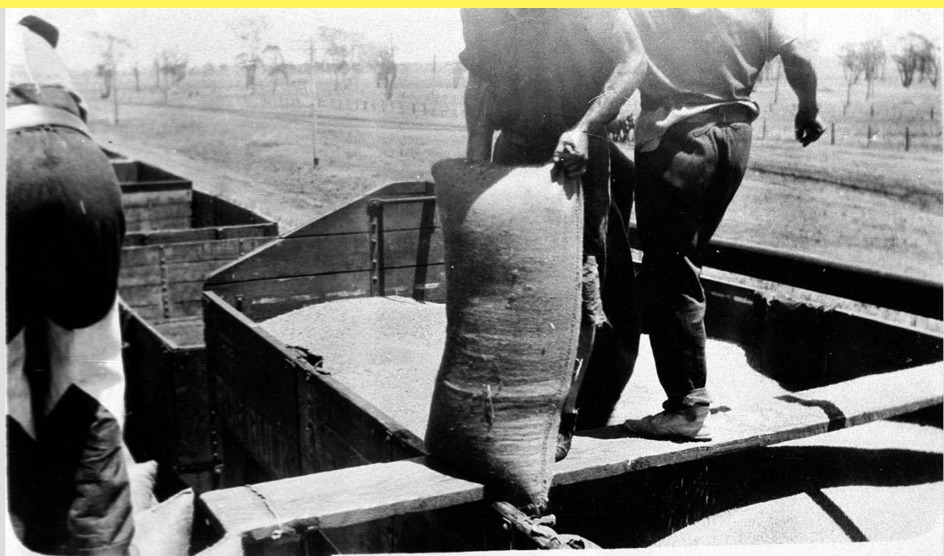
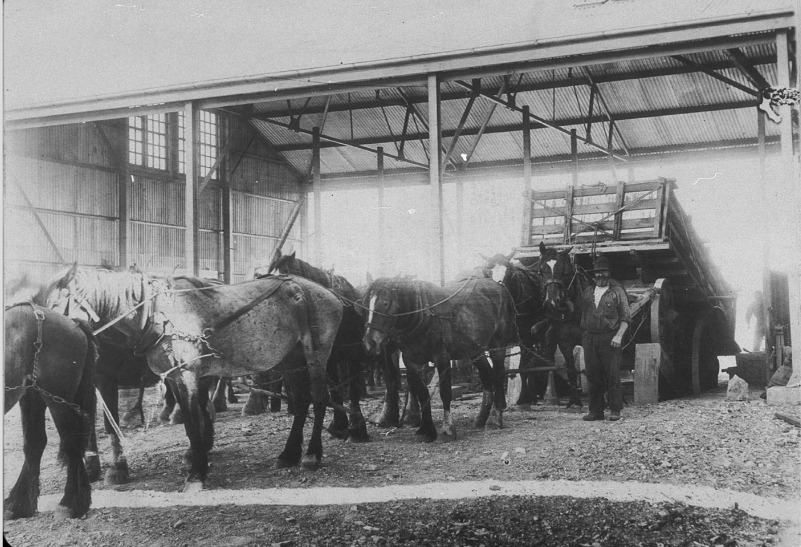
State Library of NSW Images: Wheat being tipped into bulk trucks to be transported by rail to Sydney – Nelungaloo Railway Yard, NSW; Device for tipping entire horsedrawn wagon so that bulk wheat flowed from openings at rear of bulk container into silo – Finley, NSW.
Needless to say this method suited some places and not others, bagged wheat more than held its own in those times, being practical for many places.
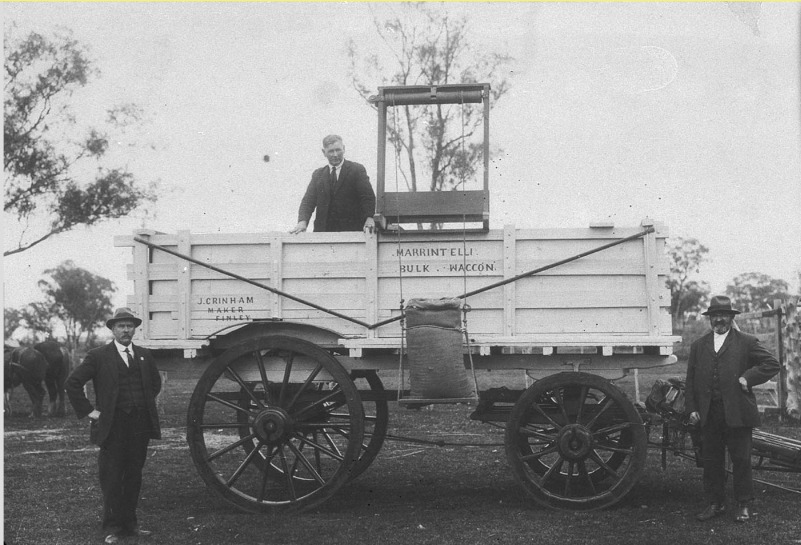
‘First bulk wheat wagon built and used at Finley for 1922 harvest. Built by John Grinham for Lorenzo Marantelli (standing at right of picture). It was lifted by a hoist on to a conventional wagon. Note the device for elevation – unsewn cornsack filled with wheat to the tipping platform – Finley, NSW.’ State Library NSW

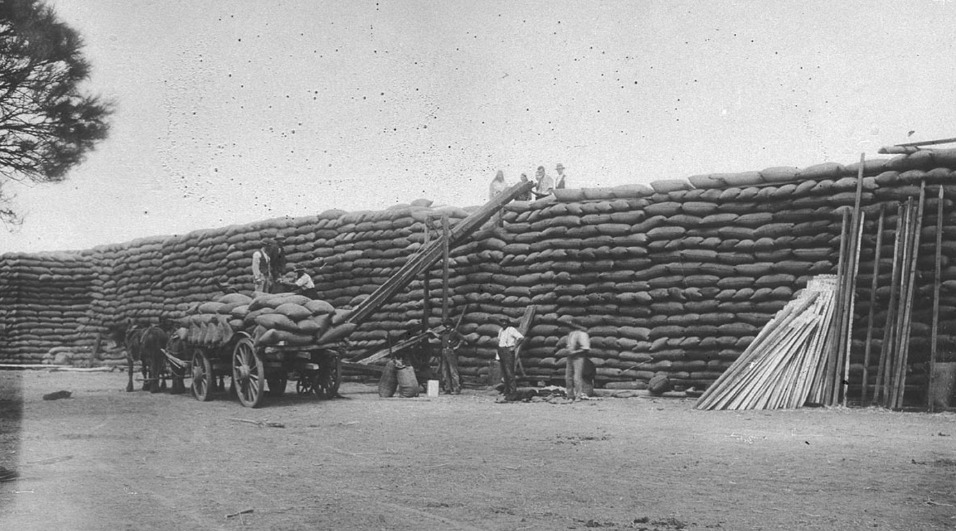
State Library of NSW, Finley NSW: Horse and wagon teams; Wheat stack after silo had filled
A few pics of the bagged wheat too, to round out the story. A lot of bagged wheat was also tipped loose into trains and silos of course. A few news clippings too – 11 tons was the limit for loose wheat in horse-drawn wagons. There was an elevator to get it into the silos -not sure when those were invented, maybe the same time as bulk handling came in?
Of course, the men knew their horses and the weights they could pull, so no horses were overloaded, it was simply a different method. And motors were becoming used too.
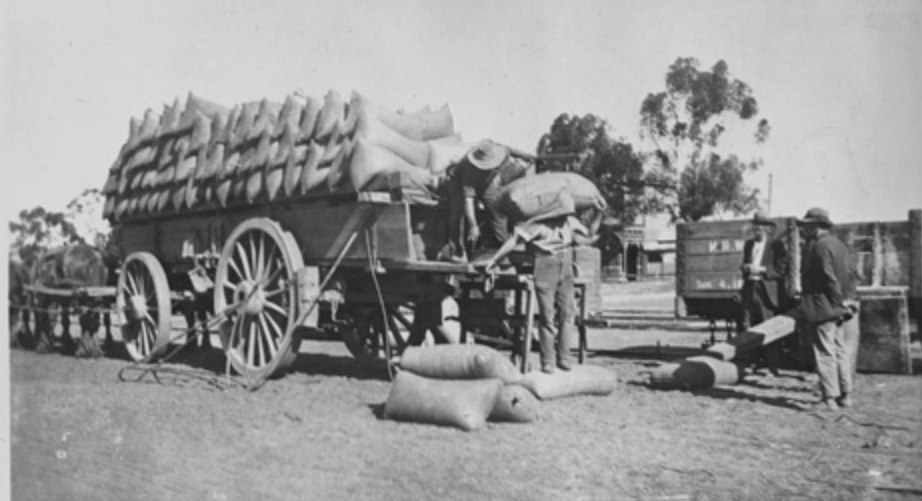
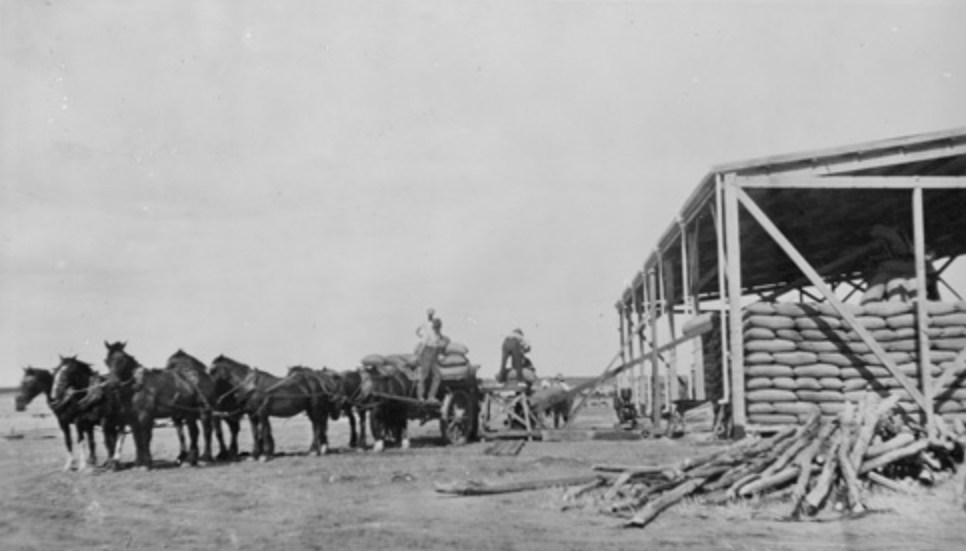
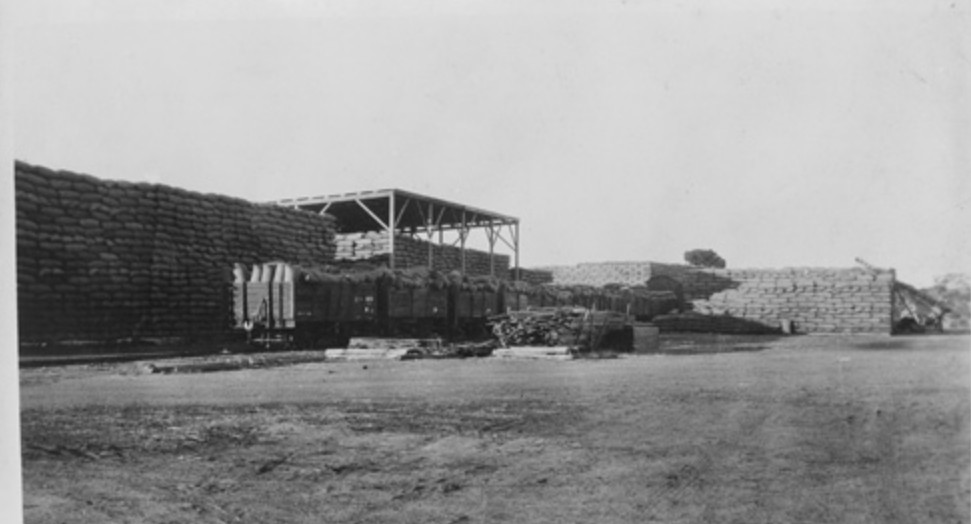
Images of bulk wheat, 1910, State Library of W.A.
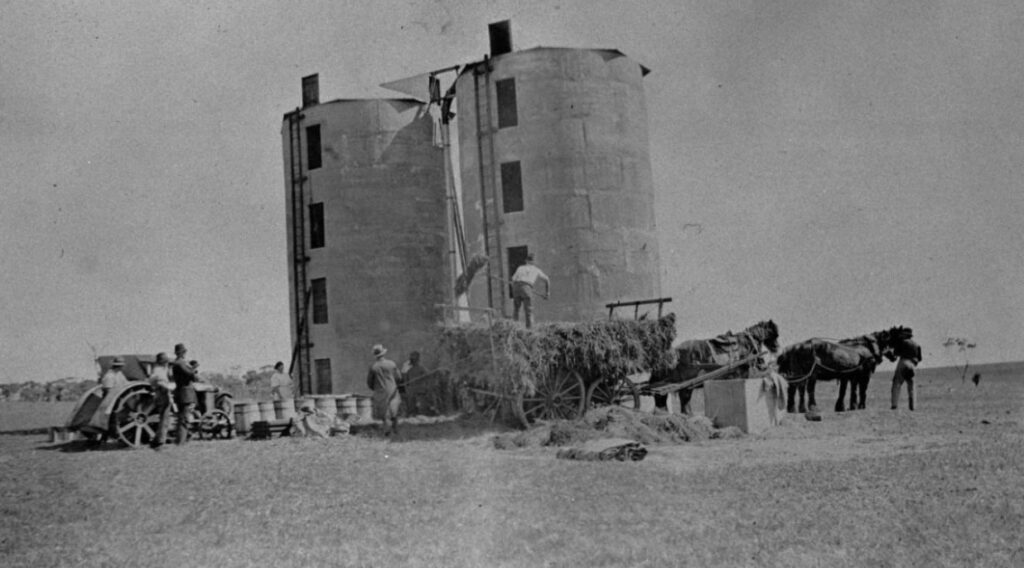
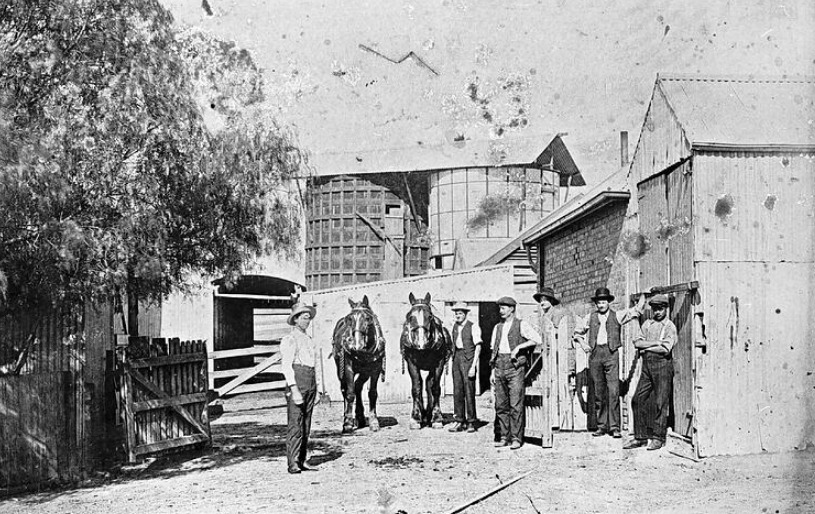
Images: Filling silos at George Clarence Spencer’s property, 2 October 1925. S.L.NSW; Horses & Workers in Farmyard, ‘Gladstone Park’ Station. The silo is of Danish design. Tullamarine, Victoria, circa 1905. Museums Vic.
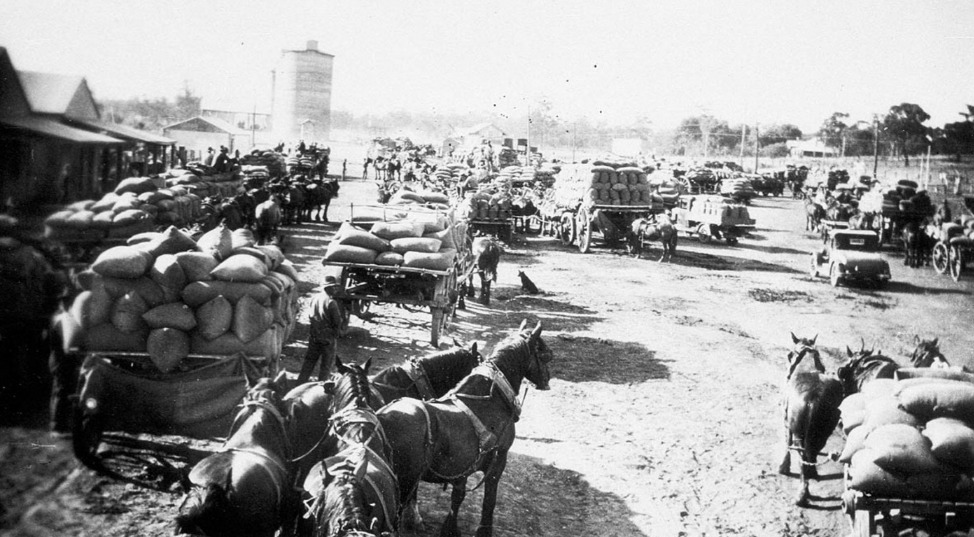
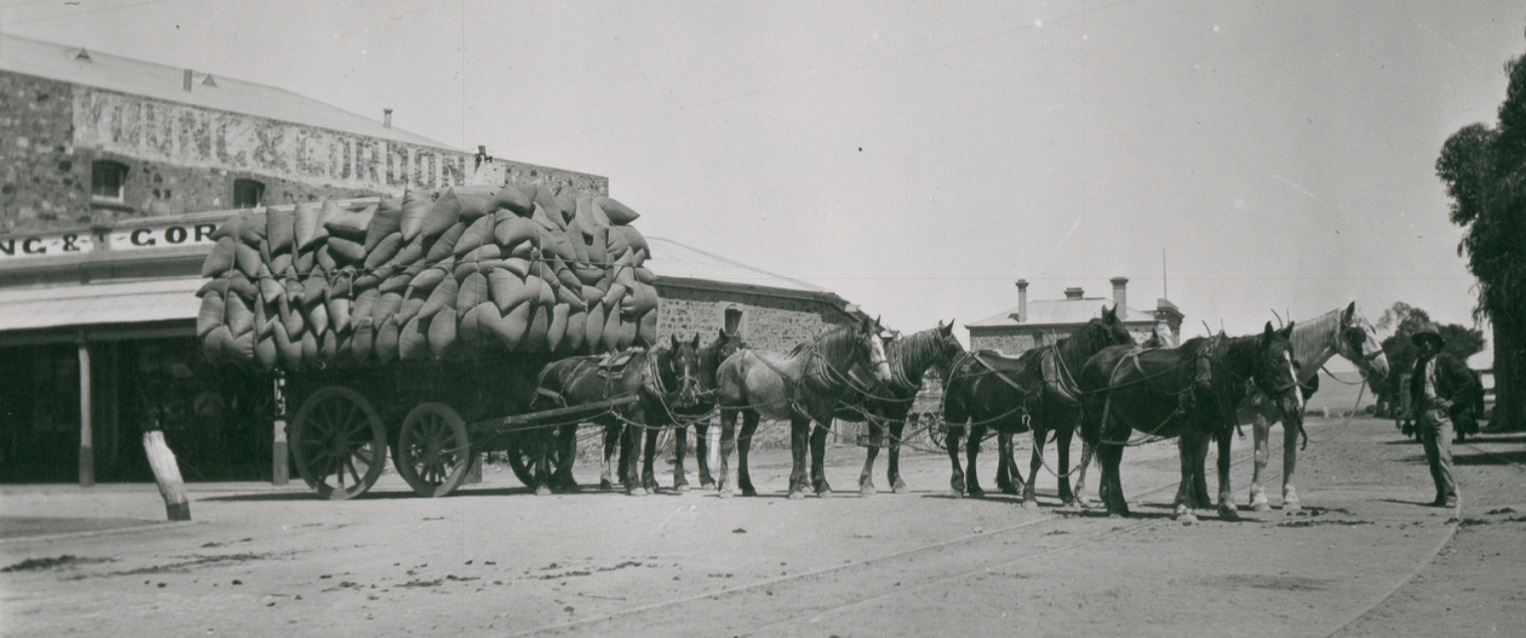
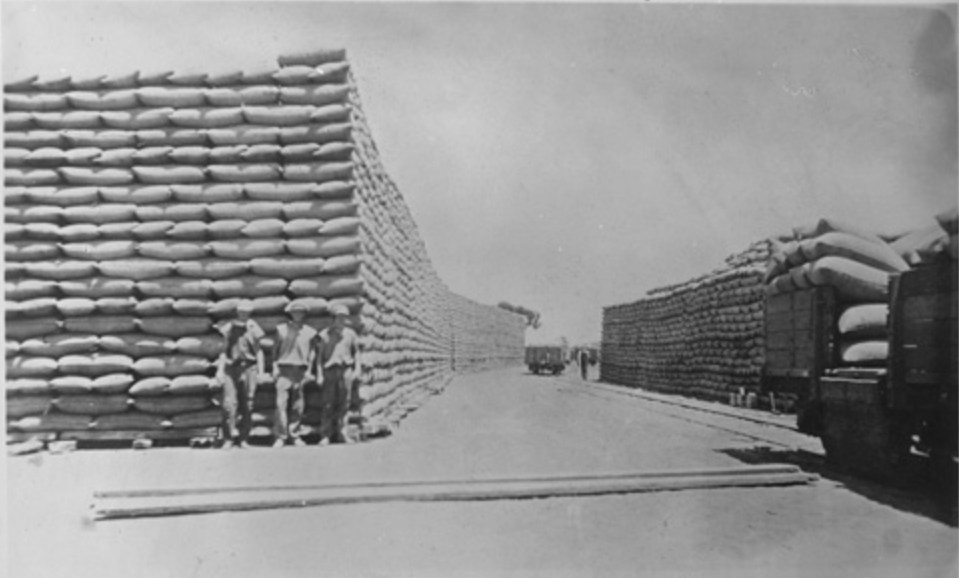
Images: Waiting to unload wheat wagons at silo – Barmedman, NSW. c. 1930, State Library NSW; Wheat team at Port Augusta. Four pairs of horses pull a wagon fully laden with sacks of wheat…W.J. Angus photo, State Library S.A.; Bulk wheat, 1910, State Library of WA
Sunday Times (Sydney), 24th December 1924
These trucks were made in Australia, there was a good production line, very solid chassis. Just including as a sign of the times, motors replacing horses and quite a cute old truck, as well as Australia building things back then. Company owned in England, trucks for Australia built in Australia.
